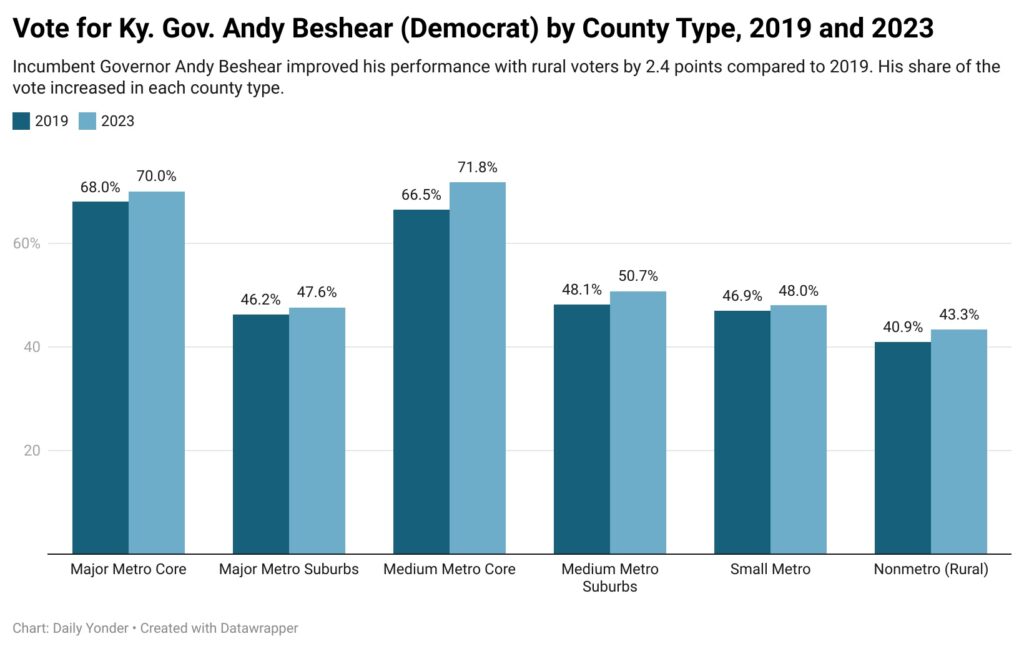Rural voters were part of a statewide shift toward incumbent Kentucky Governor Andy Beshear this week, helping give the Democrat a 5-point election victory in a state that Donald Trump won by over 25 points three years ago.
Beshear won the statewide vote 52.5% to 47.5%, a comfortable margin compared to his 2019 election victory of 0.4 points.

Beshear did 2.4 points better with rural voters this year compared to 2019 (see the graph at the top of the story). He still lost among rural voters, 43.3% to 56.7%, to Republican challenger Daniel Cameron. But with less of a rural deficit, his advantage in other parts of the state more than made up the difference.
Beshear won 17 of Kentucky’s 85 rural (nonmetropolitan) counties this year, compared to 13 in 2019. The Democrat flipped five rural counties, while his challenger flipped one rural county back to the Republican side.
Beshear also flipped three metropolitan counties. Two were in outlying counties of the Lexington metro, and one, Daviess County, is the central county of the Owensboro metropolitan area. Republican Cameron flipped Hancock County, also part of the Owensboro metropolitan area.
The Kentucky governor’s race drew national attention as a test of whether a Democratic candidate could hold a state that supported Trump so strongly in 2020.
County Definitions and Percent of Kentucky Electorate in Each
| County Type | Definition | Percent of Kentucky Voters |
| Major Metro Core | Central counties of metropolitan areas with 1 million or more residents. | 19% |
| Major Metro Suburbs | Suburban counties of metropolitan areas with 1 million or more residents. | 17% |
| Medium Metro Core | Central counties of metropolitan areas with 250,000 to under 1 million residents. | 8% |
| Medium Metro Suburbs | Suburban counties of metropolitan areas with250,000 to under 1 million residents. | 9% |
| Small Metros | Counties in metropolitan areas with fewer than 250,000 residents | 9% |
| Non-Metro | Counties that are not in a metropolitan area. Synonymous with rural in this analysis. | 38% |
During his first term, Beshear has focused on traditional Democratic issues like infrastructure and investment. He mentioned new road construction in his victory speech Friday night.
The governor’s handling of the catastrophic 2022 flood in Eastern Kentucky may have been a factor with some voters. The disaster killed 45 people and destroyed and damaged thousands of homes in East Kentucky.
The seven counties that gave Beshear his largest percentage-point increase compared to 2019 were all affected by the flooding. Two of the hardest hit, Letcher and Perry, flipped from Republican to Democratic. Beshear lost those counties by 9 points in 2019. After recovery efforts that included several gubernatorial visits, Beshear won Letcher by 5 points and Perry by 11.
This article first appeared on The Daily Yonder and is republished here under a Creative Commons license.






